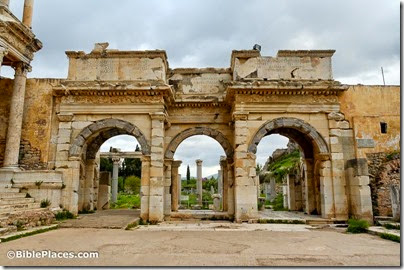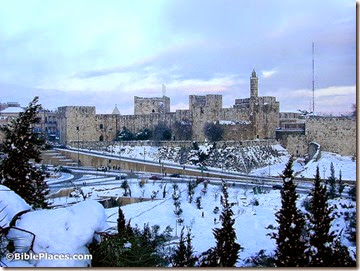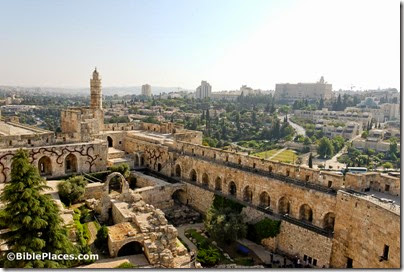Leen Ritmeyer explains why the Western Wall of the Temple Mount was not destroyed by an earthquake, and he follows up a reader’s question to prove it with photos.
Snow fell in Israel this week. Arutz-7 has photos.
The story going around this week on the location of Jesus’ trial being excavated is not new. We’ve been posting on it here under the less sensational title of the Kishle excavations. We agree that this is the area of Herod’s palace, and that this is where Jesus’ trial occurred. George Athas explains further.
I’m on the Book and the Spade this week, talking with Gordon Govier about the top 10 biblical archaeology discoveries of 2014.
Many eastern Christians visited the traditional site of Jesus’ baptism on January 6.
New book: Biblical Lachish: A Tale of Construction, Destruction, Excavation and Restoration, by
David Ussishkin. I see a few mentions online with a 2014 date, but it’s not clear if the English edition is actually available. (I’ll have to remove Lachish from my pending post on “Whatever Happened to
Popular Books on Archaeological Excavations?”) UPDATE: BAS has the book in stock.
The Bible and Interpretation features an excerpt from Eric H. Cline’s book, 1177 BC: The Year
Civilization Collapsed, explaining the power vacuum that allowed Israelite and Philistine settlement.
Tourism to Israel dropped after the summer events.
Turkey has nominated Ephesus for the UNESCO World Heritage List.
Scott Stripling summarizes the recent winter excavation at Khirbet el-Maqatir (biblical Ai?).
Wayne Stiles is hosting an informal gathering on What It’s Like to Travel to Israel next weekend.
ASOR has listed its Top 10 Blog Posts of 2014.
Walking with Paul, a Lands of the Bible wall calendar, is now available for 50% off. Several of our photos are featured.
Photo from Pictorial Library of Bible Lands




